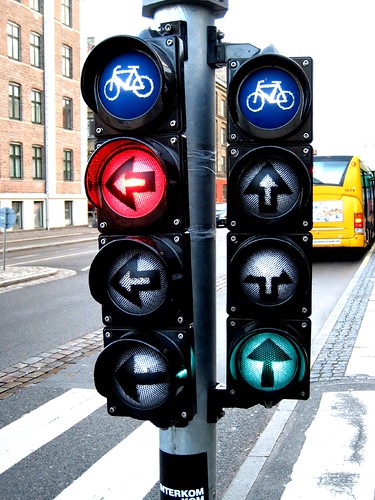Mayor Brad Woodside isn't happy with the city's system of designating bicycle lanes that allow for parking on one side of the street opposite a reserved bicycle lane.
In Woodside's neighbourhood on Douglas Avenue, there's a reserved bike lane on one side of Douglas Avenue running from Maple Street to Brookside Drive.
In the reserved lane, the city has measured off a portion of the street for bicyclists.
There's a white line running parallel to the curb to mark off the lane's width. Inside that line, painted on the pavement, is the image of a white bicycle.
There's also a white diamond that signifies that no parking is permitted.
However, on the opposite side of Douglas Avenue, there's a white-striped pavement marker running parallel to the curb with the white image of a bicycle on the pavement, but no diamond. That means cyclists can drive within the designated area, but they must share it with parked cars.
If someone is biking down Douglas Avenue toward Maple Street - and he or she encounters a parked vehicle - the bicyclist has to swerve into traffic.
Woodside said that's unsafe.
"On Douglas Avenue, there were 12 cars parked and that's a very difficult situation when we're trying to promote bike safety. When you're a kid and you're out on that street, you have to go out 12 times to get around it (those cars) that are legally parked. It might be legal, but it seems to be quite dangerous," he said.
City traffic engineer Darren Charters said it's not an ideal situation to have vehicles parking in the non-reserved bicycle lane, but it's a compromise based on the lower traffic volumes and speeds on residential streets.
Charters said the decision to use pavement markings on any street that encourages bicycle traffic is based on the classification of the street.
For instance, York Street, because it's a major collector street, has no parking on either side of the road. On that street, the city has marked with white markings a bicycle lane going up the hill and one coming down. Both are classed as reserved and cyclists aren't supposed to encounter parked cars anywhere the length of the roadway.
"Major collector (streets), arterial (roadways) of any sort, you will see no parking on either side of the road and dedicated reserved lanes on both sides of the road," Charters said. "That's exactly why we totally remove it (parking) on major collectors and arterials like Sunset Drive.
"There's higher traffic volumes, speeds tend to be a little higher and there may be trucks, so we absolutely don't want cyclists moving out around a parked car in a lane along those types of roads.
"The ideal situation wherever there are bike lanes is to have no parking. However, in residential neighbourhoods, it was recommended to us by our consultant that we will leave parking on one side of the road," Charters said.
If homeowners are having a party or extra guests, they may not have sufficient driveway room to accommodate visitors.
Examples of streets that have reserved bicycle lanes on one side, and parking is permitted on the opposite side in the unreserved bicycle lane include Crocket Street, Douglas Avenue and Rookwood Avenue.
The city has one other type of bicycle lane designation and that's a bicycle route.
On a bicycle route, you will not see any white pavement marking or bicycle symbols stencilled on the roadway.
Instead, your clue to that street being a bicycle route will be the signs. A sign showing a bicycle in green will make it clear the roadway is a bicycle route.
Another sign will show a bicycle and car side by side with the words "Share the Road.''
City council has approved additional bicycle lanes and will restrict parking for nine additional lanes in 2011.
Here's the list of streets and parking restrictions for the nine new bicycle lanes:
* There will be no parking on either side of Brookside Drive from Main Street to Route 105.
* There will be no parking on either side of Forest Hill Road from Canterbury Drive to Kimble Drive.
* There will be no parking on the south side of Irvine Street from Noble to Gibson streets.
* There will be no parking on the south side of Kimble Drive from Stoneybrook Crescent to Barrett Court.
* There will be no parking on either side of McEvoy Street from Noble Street to MacLaren Avenue.
* There will be no parking on the south side of MacLaren Avenue from Cliffe to Gibson streets.
* There will be no parking on the east side of Nobel Street from Gulliver Drive to Irvine Street.
* There will be no parking on the east side of Royal Road from Sunset Drive to Royal Road School.
* There will be no parking on the west side of Rookwood Avenue from Saunders Street to Woodstock Road.
SGE Acres Ltd. of Halifax, in association with Marshall Macklin Monaghan of Toronto, developed the city's bikeways system as part of a trails and bikeways master plan.
Thank you Mr. Mayor, for your help :)






 Fredericton, NB (September 6, 2011) – Fredericton Transit, Green Matters and Regent Mall are partnering to promote World Carfree Day in Fredericton on September 22. World Carfree Day is an annual celebration held to raise awareness about the alternatives to vehicular transportation.
Fredericton, NB (September 6, 2011) – Fredericton Transit, Green Matters and Regent Mall are partnering to promote World Carfree Day in Fredericton on September 22. World Carfree Day is an annual celebration held to raise awareness about the alternatives to vehicular transportation.














 August 3, 2011 - With additional bike routes and bike lanes being installed on Fredericton streets, it is important that the public understands the differences and signage associated with each.
August 3, 2011 - With additional bike routes and bike lanes being installed on Fredericton streets, it is important that the public understands the differences and signage associated with each.


